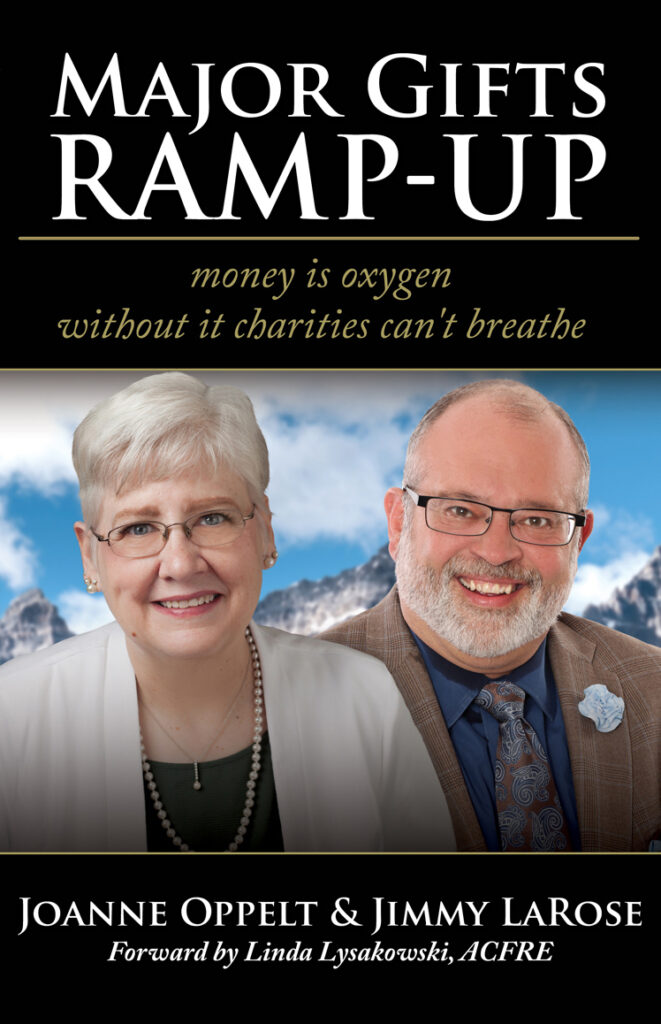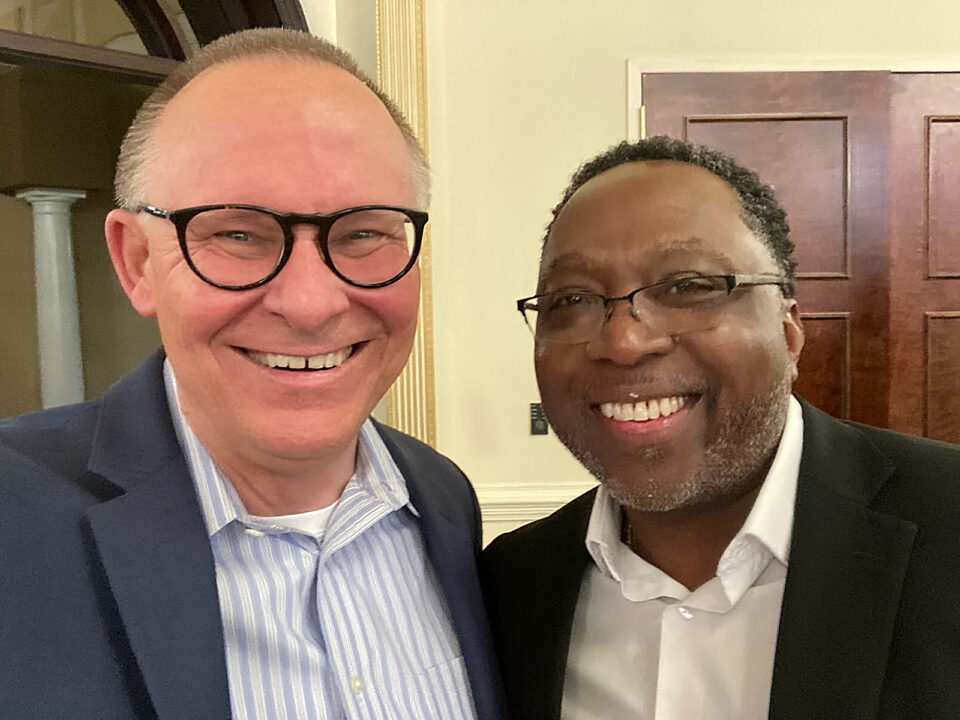
You do not have control over your external environment. The best you can do is influence those who do. You cannot make someone implement your desires if they refuse to do so. The only behavior you truly control is your own. As such, you have a choice.
You can choose to lament the current funding instability, or you can take action to address it. You can start stabilizing your nonprofit’s finances right now.
Ted, the executive director of an at-risk youth and family counseling agency, was taken by surprise. Due to political changes in his state, he was losing 60 percent of his funding. He responded by focusing all his efforts on advocacy, joining a coalition of nonprofits in the same situation. He wrote letters, went to the state budget hearings, visited his representatives, and testified to the state legislature.
Despite their best efforts, the coalition was unable to change political will. Ted was devastated. He thought of the staff he would need to lay off to make ends meet. He was angry and frustrated. This didn’t have to be.
Ted decided to lay off all non-program employees, including his development director. They increased overhead and he needed every dollar for programs, he reasoned.
With the loss in governmental funding and no one to spearhead pursuing alternate forms of revenue, the agency’s finances floundered. Ted’s workload became heavy as he tried to keep the organization serving its clients while engaging heavily in advocacy.
Soon, the nonprofit downsized. They sold their office facilities and moved to a lease that was less expensive than the mortgage. Ted lost his job as the agency shrank. Today, the organization is a shadow of what it once was.
Diversify Your Revenue Streams
You don’t need to go through what Ted did. As an executive director or CEO, you have the power to diversify your revenue streams. You can move from a reliance on government funding to a mix of earned income (fees for service), unearned income (interest and dividends from investments), and fundraising (individual donations, foundation grants, and corporate contributions) and do it rather quickly.
Where do you begin when there isn’t a whole lot of money to fund a new income initiative? You’re already operating frugally, and your funding’s been cut.
Start by delegating your advocacy efforts. Your nonprofit needs you to focus on successfully restoring the resources it lost. Make an investment in revenue generation.
Then, change your revenue mix. Of earned income, unearned income, and fundraising, begin with your fundraising strean. It costs the least to start up, produces the highest return on investment, and provides the most immediate return. That is, if you do it correctly.
According to years of Giving USA research, a steady eighty percent of all charitable dollars in the U.S. are given by individuals. Fifteen percent are given by foundations and 5 percent by corporations.
Most nonprofits are grant dependent and sponsorship heavy. You can quickly stabilize your agency’s income by going where the money is and tapping the well from which most other nonprofits are not drawing—individuals.
You don’t just go to any individual, though. You go to people with the means to fund your essential work.
The small suicide prevention agency was struggling. For forty years they had survived but never grown. Now, their grant and special event revenues were declining. The new executive director decided to change the revenue mix and stop fundraising through events and pursue major gifts instead.
It worked. Within six months of the decision, she garnered more than a quarter of next year’s budget, raising more money at much less time and expense than implementing their annual gala. As a result, program staff and volunteers were free to execute the mission of the organization. Finally, stable finances and money for growth.
Monetize Your Time
Moving to major gifts fundraising makes sense. Major gift fundraising boasts an average 900 percent return on investment (ROI). Grant seeking realizes an overage 400 percent ROI while special events come in at about 100 percent.
Plus, there’s a finite amount of time. There are only 24 hours in a day. You can only cultivate a so many donors in the time you have. Either you will spend fundraising resources maintaining shallow relationships with many donors who have the means to give little or building strong, trusting relationships with fewer donors who have the means to provide much. Spend your time where it will yield the greatest results.
Consider your business strategy. It’s a matter of volume and price. The lower the price (donation amount), the more volume (number of donors) you must churn to realize as much revenue as fewer customers (high-net-worth donors) buying a higher-priced product (making large donations).
Monetize every minute of your workday as much as you can, especially during financially unstable times like these. You monetize your time and diversify your revenue by making major gifts fundraising a priority.
Let your COO or operations director worry about programs while you identify, meet, interact with, and ask high net worth individuals for substantial investments in your work.
You don’t, however, approach known rich people and ask them for money right away. There’s a process to follow.
Identify High Net Worth Givers
Do you know all the individuals, foundation board members, and business executives in your community that are millionaires? How do you obtain such a list?
A GuideStar search will produce a list of foundations and their board members you can contact. Cause IQ, ZoomInfo, and People Data Labs are a few of the corporate search tools you can use to find business owners and executives. To find individual millionaires, use DonorScope, a wealth screening platform designed by the founder of Major Gifts Ramp-Up.
DonorScope allows you to own the names and addresses of every individual, corporate executive, and foundation board member whose assets exceed seven figures. Their data is pulled straight from Experian.
The first step to identifying where the wealth in your community lies is to download a list of millionaires who live within a specified radius of a specific zip code. Put in your nonprofit’s zip code, select a radius, and select your wealth parameters.
The next step is to uncover people of wealth already in your nonprofit’s universe. Upload staff, volunteer, newsletter, and vendor lists. Next, gather the names of individuals in relationships with these connections and upload them. The result is a list of people who have the means to give large gifts who are already connected to your agency.
Finally, compile a list of donors who give to nonprofits in your area. Include community foundation board members, business leaders, entrepreneurs, high-society socialites, and other people of affluence and influence in your catchment area. The result is a list of influential people who can and do give. Upload this list to DonorScope and screen them for wealth.
Rank the names from all three lists based on their financial indicators. You now have a master list of millionaires in your community who have the capacity to make a substantial investment in your work. Your job now is to draw them into relationships with you and earn the right to ask for a substantial investment.
Earn the Right to Ask for an Investment
You must earn the right to ask before approaching a millionaire for a donation by building a meaningful relationship with grace and propriety. The good news is that you don’t need to reinvent the wheel. There is a proven, methodical, major gifts system available at relatively low cost. It’s called Major Gifts Ramp-Up.
Major Gifts Ramp-Up teaches you how to reach out to people of wealth in your community, build relationships with them, engage them in your cause, and ask them for a comprehensive gift: money for operations, capital, and endowment.
By using a three-part ask, it’s as if you are conducting a fundraising campaign, capital campaign, and endowment campaign at the same time. You get more for your investment than running three separate campaigns.
One of the side benefits is that you not only raise money for immediate needs, you also generate revenue for future sustainability by establishing an endowment. You more than diversify your fundraising streams, you diversify your overall revenue streams, producing unearned income, further stabilizing your financial position.
Major Gifts Ramp-Up
The first thing you do is prioritize major gifts fundraising. Then you define what missional success means, how you will get there, and how much it costs to attain. Next, summarize your work in a case for support.
Your case for support is a visually appealing, professionally designed document outlining your nonprofit’s mission, history, leadership, programs, uniqueness, and effectiveness. It also presents your vision to completely solve the issue you address and the cost of doing so. It is undergirded with objective data.
You use your case for support to build relationships. By asking for advice regarding your plans, you bring community leaders into your nonprofit family and win their support.
You listen to your prospects, get to know them, and offer opportunities for them to be involved based on their likes and preferences. You approach each prospect with forethought and intention using an individualized plan of care. If you have 100 prospects, you draft 100 individual plans of care.
To introduce your case to local millionaires, invite them to a non-fundraising awareness event. The low-cost luncheon introduces your great dream backed sound plan via a carefully timed and scripted program and printed case for support.
Also offer opportunities for prospects to publicly support your campaign by lending their names to your non-fundraising awareness event invitation, hosting a table at your signature ask event, and/or serving on your campaign cabinet. Your relationships grow and you gain the financial support of millionaires. Make a three-part ask, unique to the Major Gifts Ramp-Up model, and watch your income stabilize.
If you follow the thirteen-step Major Gifts Ramp-Up model religiously, you will raise the millions you need to not only stabilize but grow.
When the government cutbacks came, Ericka knew she had to do something different. With only 60 individual donors, she decided to grow that specific revenue stream. She turned to Major Gifts Ramp-Up.
Within the first six months of their campaign, they realized a $2.2 million dollar gift, a million of it in cash. Within the next three months, they realized another $2.5 million. By the end of twelve months, their donor base had grown to more than one hundred fifty and they had raised a total of $7 million.
Major Gifts Ramp-Up campaigns are proven to raise the most money in the shortest period at the least cost. Most major gift campaigns cost 4-5 percent of revenues. Major Gifts Ramp-Up initiatives come in at 2-3 percent.
There are other resources as well. You can read the book Major Gifts Ramp-Up: Money is Oxygen—Without It Charities Can’t Breathe. You can attend a two-day Major Gifts Ramp-Up conference, during which you can gain access to the Major Gifts Ramp-Up cloud, the largest collection of major gift resources that exists.
For more information, I invite you to visit https://majorgiftsrampup.com
Bringing It All Together
Do more than lament the current funding cutbacks. Take action. Address the budget crisis you face. Begin right now to stabilize your nonprofit’s finances.
If you want to take control of your nonprofit’s destiny, implement these four steps:
1. Restructure your revenue mix. Start with the way you fundraise. Go where most of the philanthropic dollars reside—individuals.
2. Define missional success and the cost to achieve it. Overview your work in a compelling case for support.
3. Identify the people in your community with the means to fund your essential work. Know where every dollar dwells.
4. Earn the right to ask for a substantial investment in your work. Use the Major Gifts Ramp-Up model to build strong, trusting relationships and engage millionaires in your cause. When they are ready, ask for their financial support.
5. Watch your financial position quickly improve.
 Joanne Oppelt is a member of the National Association of Nonprofit Organizations and Executives (NANOE), a faculty member at the National Development Institute, and a Major Gifts Ramp-Up counselor with Development Systems International. She is the co-author of the new book MAJOR GIFTS RAMP-UP.Joanne has spent over thirty years in the nonprofit sector, helping nonprofits of all sizes. She has worked across multiple areas, including affordable housing, the arts, child welfare, disabilities, early childhood education, maternal and child health, mental health, at-risk youth, and more. She has trained thousands of fundraisers and authored, co-authored, or edited more than twenty books on fundraising and nonprofit development. Joanne’s extensive background with a wide variety of 501(c)(3)s has given her a specialized insight into understanding the challenges nonprofits face. Her years of working in the nonprofit sector have given her the gift of knowing exactly what it takes to run successful fundraising campaigns completed on time, under budget, and over goal. Joanne holds a B.A. in education from Bethany University and a master’s in health administration from Wilkes University. She is privileged to help charitable organizations significantly impact the world.
Joanne Oppelt is a member of the National Association of Nonprofit Organizations and Executives (NANOE), a faculty member at the National Development Institute, and a Major Gifts Ramp-Up counselor with Development Systems International. She is the co-author of the new book MAJOR GIFTS RAMP-UP.Joanne has spent over thirty years in the nonprofit sector, helping nonprofits of all sizes. She has worked across multiple areas, including affordable housing, the arts, child welfare, disabilities, early childhood education, maternal and child health, mental health, at-risk youth, and more. She has trained thousands of fundraisers and authored, co-authored, or edited more than twenty books on fundraising and nonprofit development. Joanne’s extensive background with a wide variety of 501(c)(3)s has given her a specialized insight into understanding the challenges nonprofits face. Her years of working in the nonprofit sector have given her the gift of knowing exactly what it takes to run successful fundraising campaigns completed on time, under budget, and over goal. Joanne holds a B.A. in education from Bethany University and a master’s in health administration from Wilkes University. She is privileged to help charitable organizations significantly impact the world.


